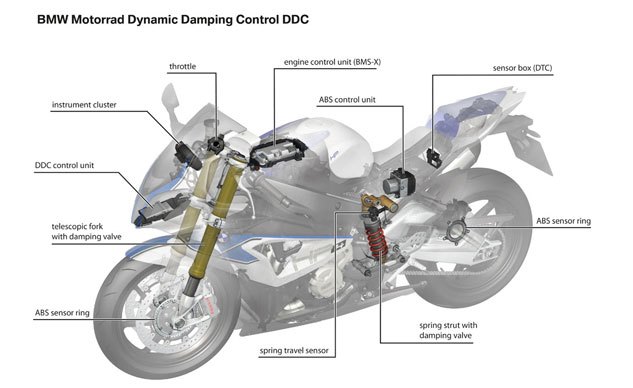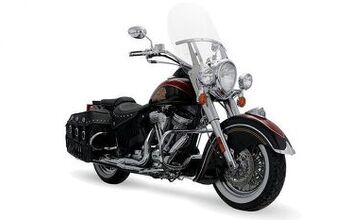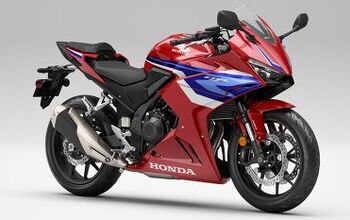Best New Motorcycle Technology of 2013
Semi-Active Suspension
It’s a rare event when the introduction of a new feature to motorcycling results in a paradigm shift of what’s possible, but the roll-out of semi-active suspension among several European manufacturers is an advancement that changes how we think about wheel control.
Our first taste came during BMW’s HP4 launch last September at the Jerez circuit in Spain. Dynamic Damping Control uses Sachs components to automatically adjust damping every 10 milliseconds based on data feeds from throttle position, velocity, gear position and the traction-control system, including its bank-angle sensors. DDC worked well at Jerez, but the smooth racetrack wasn’t much of a challenge.
Next up was Ducati Skyhook Suspension tested on the Multistrada S one month after the HP4. Like the BMW, DSS uses a Sachs fork and shock with electronic solenoid valves to actively alter damping circuits depending on vehicle data. Tested on a multitude of road surfaces, the semi-active circuitry was especially impressive. DSS supernaturally ironed out large bumps while keeping taut control when being ridden aggressively, and it wonderfully limits longitudinal forces during hard braking.
A few months later came the introductory ride on BMW’s all-new R1200GS, including its optional Dynamic ESA. Also based on Sachs componentry, Dynamic ESA’s semi-active suspension works similar magic as the Multistrada’s, providing adaptable damping appropriate to the current riding conditions.
We’ve performed follow-up testing on all three of these machines, and the efficacy of semi-active suspension has made us true believers in this technology. Although currently available on only high-end motorcycles, the technology is relatively affordable. Of the cost of the HP4’s system, BMW reps didn’t balk when I hypothesized a 500 euro value, so we’ll surely be seeing similar systems on more bikes in the near future.
More comfort when you want it, and more control when you need it, performed automatically and without thought or action from a rider. Once you try it, you’ll never want to go back.
Read More:
2013 BMW S1000RR HP4 Review – Video
2013 BMW HP4 Revealed – A Lighter, Track-Oriented S1000RR With Dynamic Damping And Launch Control
2013 Ducati Multistrada 1200 S Touring Review
2013 Ducati Multistrada 1200 S Touring Vs. 2013 Triumph Explorer – Video
How The 2013 Ducati Multistrada 1200S’ Skyhook Suspension Works
2013 Aprilia Caponord 1200 Review
Best Technology Honorable Mention: Zero Smartphone app
When we heard about the Zero smartphone app, which allows you to view a host of parameters like speed, range, charge remaining, as well as adjust settings like top speed and maximum torque output, we were intrigued. But when editor Siahaan got a chance to sample the app while racing at Pikes Peak earlier this year, he was sold on its usefulness.
Adjusting power and speed to maximize efficiency is now done with the press of a button. No more pulling out wrenches and getting bloody knuckles. The app can act as a digital dashboard, replacing most of the gauges currently on the Zero altogether if desired. With the ability to be so in tune with the motorcycle, in real time, in a way not yet seen on gas bikes, the app allows the user to experience motorcycle riding in a whole new light. This type of tech will no doubt become commonplace among e-bikes, and when it does, we can look back at Zero for helping pave the way.
Read More:
Motorcycle.Com Races To The Clouds At Pikes Peak
Zero Mobile App Can Adjust Motorcycle’s Performance
Best of 2013
More by Kevin Duke































Comments
Join the conversation